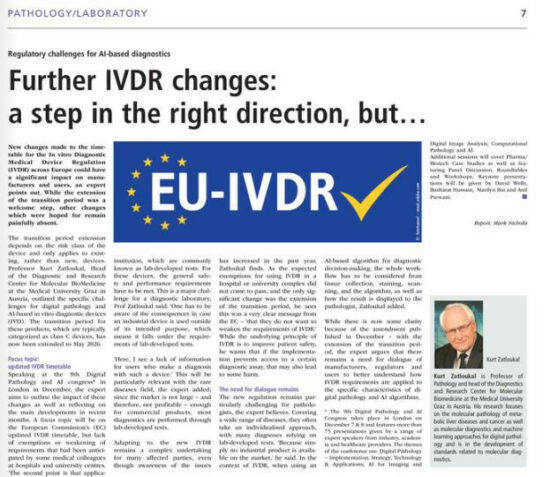Regulatory challenges for AI-based diagnostics – Further IVDR changes: a step in the right direction, but …
The IVDR is already in place in Europe and also effects manufacturers and users of AI-based in vitro diagnostics. Speaking at the 9th Digital Pathology and AI congress in London (Dec 2022) Kurt Zatloukal talks about the impact of the IVDR and the major developments in this field.
The IVDR transition period has recently been prolonged until 26 May 2026 for those IVDs being already on the market. The extension gives industry more time to comply with the requirements of the IVDR and get existing IVD devices recertified. For all new products, however, the IVDR applies fully already now. This also accounts for AI-based in vitro diagnostic devices, which are typically class C devices.
The IVDR also applies to so-called laboratory-developed tests or in house IVD tests, i.e. for tests manufactured by and applied in the health care institutions’ diagnostic laboratory.
These regulatory developments pose new challenges for manufacturers, users and regulatory bodies, and there remains the need for a better understanding how IVDR requirements are applied to digital pathology and AI-algorithms.


